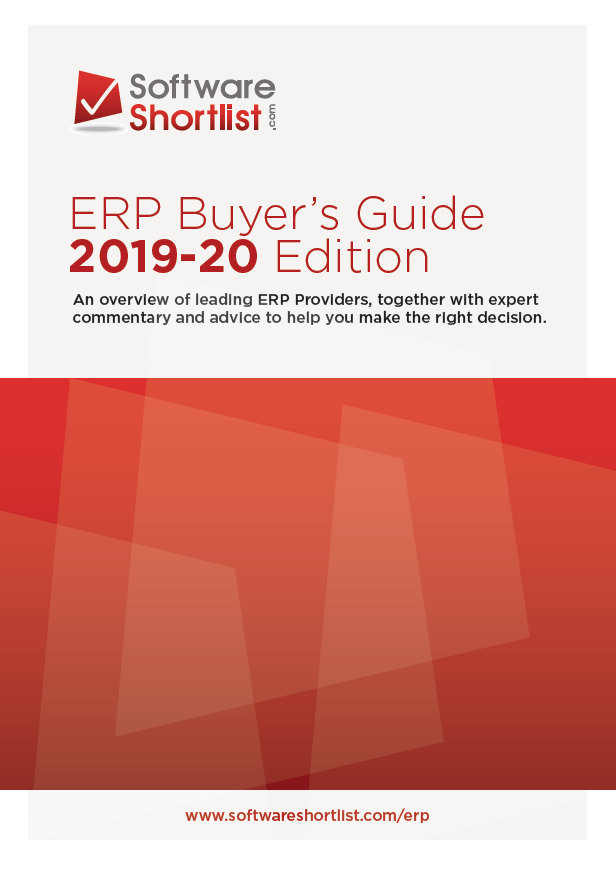The manufacturing sector is a prime example of an industry vertical that has embraced technology. MRP & ERP systems have transformed productivity and efficiency in a sector whose margins were squeezed by globalisation. Now retail is under similar pressures with the growth of online retailing. Here Anthony Doesburg uncovers the lessons that the retail sector can learn from the way manufacturing uses technology…
Technology has proved a lifeline for many manufacturers that could easily have gone under as globalisation – outsourcing to factories in parts of the world where labour is cheap – has swept through the sector. And for those not vulnerable to low-priced knock-offs, the global recession and other market pressures have forced them to seek savings through IT systems.
Now retailers are facing similar challenges. Overseas online shops such as Amazon, with its slick ordering, vast distribution centres and speedy delivery network, are threatening the livelihoods of retailers as distant as Australia and New Zealand. Not even the possibility of applying GST to small overseas purchases might be enough to save local shopkeepers, many of whom are struggling to match the prices and product ranges of their new online competitors.
To have a hope of getting close to the prices Amazon and its ilk can offer shoppers, they need to be looking at fundamental system changes. In other words, they need to be taking a leaf out of manufacturing’s book.
Pet food maker Butch found big cost savings when it began using financial system Greentree, which was implemented to pull together data from the 50-year-old company’s sales and marketing, administration and dispatch departments.
The system has helped the export business slash raw material costs, says office manager Carl Jeffery.
“Raw materials are our biggest single expense,” Jeffery says. “Now we can better measure our input and output, we won’t have to hold so much. Instead of holding $NZ1.5 million worth of raw materials at any time, we might be able to drop that by half. That’s going to be a major saving in running costs.”
Implementation of further Greentree modules will help the company meet its growth ambitions, which have seen it begin shipping its dog and cat food rolls to several Asian and Pacific markets.
Carbon fibre marine components maker C-Tech successfully kept one threat to its business at bay thanks to a modern enterprise resource planning system. Now it is grappling with getting sales online. But it has the advantage of being able to apply lessons learned during the implementation of ERP system SyteLine to its latest challenge.
“Inventory is the cornerstone of a web-shopping solution,” says C-Tech administration manager Lyn Holland. “We put a lot of work into getting our product codes right, including splitting some of our products up into components that can be sold separately. However, we are revisiting some of our processes around bar-coding, serial and lot numbers to make us more web-shop-friendly.”
C-Tech had built up a business that depended for three-quarters of its $NZ5 million annual turnover on sales of sail battens, many of them to America’s Cup teams. SyteLine showed its value when a design-rule change to the world’s richest regatta made battens obsolete, with fixed wings replacing sails.
The ERP system helped C-Tech make the transition to producing a range of tubular composites for applications as diverse as telescopes, guitar necks and gun silencers, as well as control components for the wings of the 2013 regatta’s yachts.
“Without the costing information we gained from having an ERP system we could have gone down some wrong tracks very easily,” says Holland. “We also have a much clearer picture of product cost versus sell price at a time when people are taking a lot more care over what they buy.” It is also proving a useful platform as C-Tech, as a matter of urgency, develops an online selling capability.
As Amazon demonstrates, once online retailers have the appropriate technology platform, they are limited only by their imaginations and marketing budgets. From starting out as a bookseller 20 years ago, it has become the Harrods of internet shopping, with sales of all manner of things expected to top $US60 billion in 2013.
Google, not to be outdone, is also making its mark in online retail. From what began life as Froogle, a price comparison service developed by Kiwi Google engineering high-flyer Craig Nevill-Manning, Google Shopping is the search giant’s latest e-tail offering, leading shoppers to merchants who buy ads on the site.
This article was originally published in iStart Technology in Business magazine



